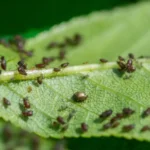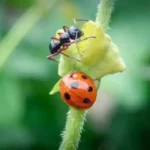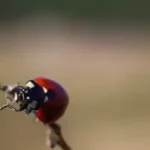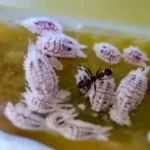After weeks of tending your garden, you finally see your plants flourishing, only to discover squash bugs lurking beneath the leaves. The disappointment of such uninvited guests is inevitable when growing a budding garden, especially when you’ve poured so much love and effort into your masterpiece. Although turning to harsh insecticides might seem the most straightforward answer, there are gentler ways to protect your turf that aid in natural pest control while preserving the surrounding environment.
Natural pest control involves non-chemical methods to repel pests. The practice of companion planting, like marigolds with tomatoes, deters pests. Beneficial insects like ladybugs eat aphids, spider mites, and other harmful garden pests. Neem oil and garlic spray are eco-friendly repellents that don’t have the harsh chemicals of store-bought synthetic varieties.
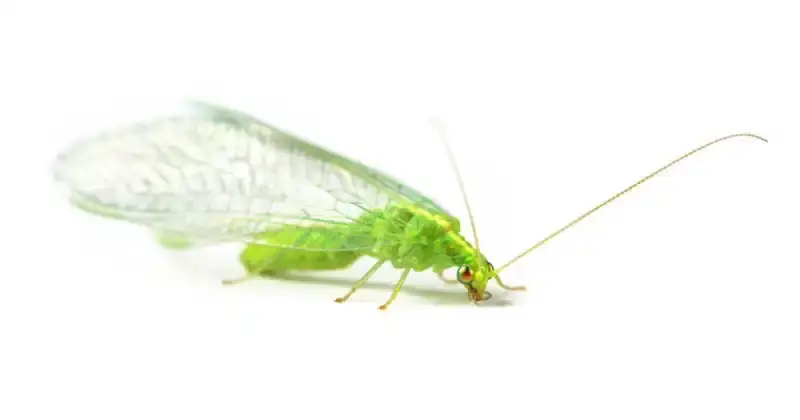
So, how do you stop pests from ruining your garden without resorting to damaging chemicals that can do more harm than good? Let’s talk about the power of natural solutions that keep your garden healthy and those intruders at bay while ensuring a thriving, eco-friendly garden.
In this article, we’ll unlock the secrets of nature’s infestation control by learning about your garden’s harmful and beneficial insects and the different methods of balancing this delicate but essential ecosystem.
Humble Highlights
- Save time by discovering safe green pest solutions for your garden so you can say goodbye to damaging insects while enhancing your thriving oasis!
- Distinguish between the beneficial and harmful insects in your garden so you know which ones are best for plant health and abundant harvests while acting immediately and treating the ones that aren’t.
- Gain exceptional insights into the advantages of environmentally friendly pest deterrence so you can get rid of plant predators the organic way by using tried and tested organic pest control methods.
Chemical-Free Pest Control For Organic Gardening
Natural garden pest control offers a safe and eco-friendly alternative to the traditional method, where you can effectively manage and eliminate pests without relying on harmful chemicals. This approach focuses on utilizing natural ingredients and techniques safe for humans, pets, and the environment.

Benefits Of Natural Garden Pest Control
Eco-friendly pest prevention refers to using natural methods to manage and control unwanted garden critters without relying on synthetic chemicals. Fortunately, this approach has several components, including the following advantages.
Avoiding Harmful Effects Of Chemical Pesticides
Organic methods, like companion planting, composting, and homemade sprays, minimize pollution in our surroundings. These natural techniques keep chemicals out of the air, water, and soil, ensuring a cleaner environment for your backyard garden and the surrounding landscape.
Chemical-based pesticides can have a detrimental impact on the ecosystem, killing beneficial insects and pollinators. Conversely, organic pest management methods rely on biodegradable and sustainable materials that do not harm the environment or disrupt the delicate balance of ecosystems. 1
Maintaining Garden Biodiversity
A healthy garden, whether outside or in a greenhouse, is diverse. Various plants and insects all play their respective part within your green space. Environmentally friendly pest deterrence encourages this diversity, creating a balanced environment where plants, soil, and natural predators thrive together, fostering a healthy garden ecosystem.
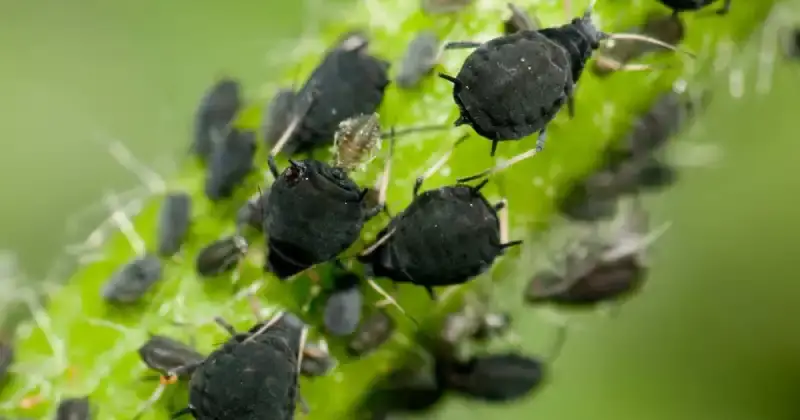
Environmental friendly pest deterrence encourages diversity by reducing harmful pesticides that can mistreat wildlife and pollinators. Following natural pest control methods allows for a more balanced ecosystem where different species can thrive and coexist. Additionally, these methods often rely on natural predators or deterrents, which help maintain nature’s balance and promote biodiversity.
Protecting Beneficial Insects
Chemical treatments can harm many common garden insects, such as pollinators (bees and butterflies) or beneficial predators (lacewings and praying mantises). Even the hungry grasshopper, although destructive, can be considered a beneficial critter for your garden’s soil and biodiversity.
In fact, many home gardeners don’t understand that using synthetics to treat the encroaching bugs inadvertently kills the helpful ones.
The downside is that these harmful insect colonies can swell to even greater numbers if the chosen treatment doesn’t work effectively. With no natural predators within their vicinity, they can decimate your plants.
Therefore, using natural ways of controlling pests ensures these helpful insects remain safe, letting them continue their essential roles in our gardens.

Safe For Humans And Pets
The beauty of natural remedies is their safety. One of the main advantages of natural gardening is that it poses minimal risks to your health. Traditional pest control methods often involve toxic chemicals that can adversely affect humans, especially if ingested or inhaled. 2
On the other hand, chemical-free pest control methods use natural substances like citronella oil, peppermint oil, and Neem oil that are safe for humans and animals. Handling pests in your garden with these methods ensures that your family, pets, and general wildlife are safe from harmful chemicals.
In fact, I wrote an article on how natural coffee grounds can help keep pesky squirrels out of your garden.
Opting for organic pest control in the garden has its perks. For example, it protects your health, preserves the environment, and promotes responsible long-term pest management. By opting for environmentally friendly pest control, you can effectively manage pests while minimizing the use of harmful chemicals.
Remember the wildlife that your garden will undoubtedly entice. Deer, rabbits, squirrels, groundhogs, and raccoons are some rascals that may frequent your budding green space. Fortunately, I wrote an entire article on how to keep rabbits out of your garden so you can protect what’s rightfully yours.
Common Garden Pests, Insects, Bugs, Slugs, And Snails To Deter
In any vegetable garden, you’re bound to encounter insects that seek to damage your well-maintained garden utopia. So, knowing what’s lurking within your space can help you create a vibrant paradise that thrives despite these customary challenges. Let’s familiarize ourselves with these soft-bodied insects, understand their damaging impacts, and explore natural and effective elimination methods.
| Insect | Why They’re Bad | Ways To Get Rid Of Them |
|---|---|---|
| Aphids | Suck plant sap, weakening plants. Transmit diseases like Cucumber and Bean Mosaic Virus. Produce a sticky and sugary substance called honeydew, which can foster the growth of sooty mold, further harming the plant and making it unsightly | Introduce ladybugs, lacewings, and parasitic wasps. Spray with insecticidal soap. |
| Scale Insects | Suck plant sap, causing leaves to yellow and drop to the ground. Produce honeydew, a sugary and sticky substance that can coat leaves and stems and block sunlight from reaching the plant’s leaves, hindering photosynthesis. | Use horticultural oil and Neem oil. Use insecticidal soap. Introduce natural predators such as ladybugs, lacewings, and parasitic wasps. |
| Japanese Beetles | Eat a variety of plants, leaving skeletonized leaves. | Use pheromone traps. Hand-pick and drown in soapy water. Introducing beneficial nematodes. |
| Caterpillars | Consume large amounts of foliage, damaging plants. | Introduce predatory wasps. Hand-pick off plants. |
| Whiteflies | Suck plant sap, leading to yellowing leaves and stunted growth; transmit diseases. | Use yellow sticky traps. Insecticidal soap. |
| Spider Mites | Damage plants by sucking cell contents, causing stippling or bronzing of leaves. | Introduce predatory mites. Use insecticidal soap. |
| Leaf Miners | Larvae tunnel inside leaves, causing visible trails and damage. | Remove and destroy affected leaves. Introduce natural predators such as parasitic wasps and green lacewings. |
| Mealybugs | Suck plant sap, weakening plants and producing honeydew. | Use insecticidal soap. Introduce natural predators like ladybugs. |
| Thrips | Causes stippling on leaves. Transmits plant viruses like Tomato Spotted Wilt Virus and Impatiens Necrotic Spot Virus. | Use blue sticky traps. Insecticidal soap. Introduce natural predators like ladybugs. |
| Snails and Slugs | Eat young plants, leaves, and fruits; leave slimy trails. | Use Diatomaceous earth. Hand-pick. Set beer traps. |
Beer traps, commonly used in gardens, attract slugs and snails with their yeasty aroma, leading these slimy critters to drown in the liquid. These unique traps are easily made using shallow containers of beer placed at ground level.
On the other hand, pheromone traps utilize synthetic insect pheromones to attract specific insect species, typically moths and beetles. These traps effectively monitor pest populations and can sometimes reduce their numbers, but they don’t permanently eradicate the pests. 3
Biological Pest Control Method: Using Beneficial Insects
Biological pest control involves using living organisms to manage unwanted pests. It’s a natural approach that taps into predator-prey relationships to keep pest populations in check. This method prioritizes long-term solutions over quick fixes, aiming to establish a stable community of beneficial organisms that regulate pests continuously. By introducing or supporting predators like ladybugs, lacewings, or parasitic wasps, gardeners can naturally suppress damaging pest populations, reducing the need for chemical interventions.
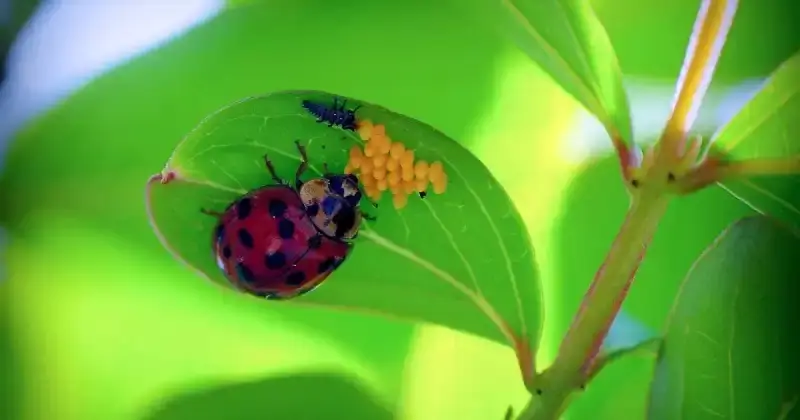
Creating habitats and providing resources for beneficial insects is a strategic approach in organic gardening wherein you can help create a balanced ecosystem that supports pollinators and predators, ultimately leading to healthier gardens and reduced pest problems. 4
If you want to discover how to apply the best natural pest control methods for your home garden, hold on for just a second. I wrote an entire article and guide devoted to how you can protect your crops with surefire ways to fight back while protecting and maintaining your green turf.
The informative table below outlines helpful insects and the specific pests they target.
| Beneficial Insect | Target Pests |
|---|---|
| Ladybugs (ladybirds) | Aphids Spider Mites Thrips Ants Spiders Mealybugs Scale insects |
| Green lacewings | Aphids Leafhoppers Caterpillars Mites Mealybugs Flea Beetles |
| Praying mantises | Caterpillars Beetles, Grasshoppers Crickets |
| Ground beetles | Slugs Snails Caterpillars Cutworms |
| Soldier beetles | Caterpillars Aphids Soft-bodied insect larvae |
| Parasitic wasps | Cabbage Worms Cucumber Beetles and Flea Beetles Flies Leaf Miners Moths |
| Hoverflies | Aphids Mealybugs Scale insects |
| Nematodes | Grubs Root weevils Cutworms |
Use Organic Garden Pest Control (Cultural Control)
Cultural control is a straightforward yet practical approach to natural pest management. Instead of relying on manufactured chemicals, this process involves tweaking regular farming and gardening practices to make the environment less hospitable for pests.
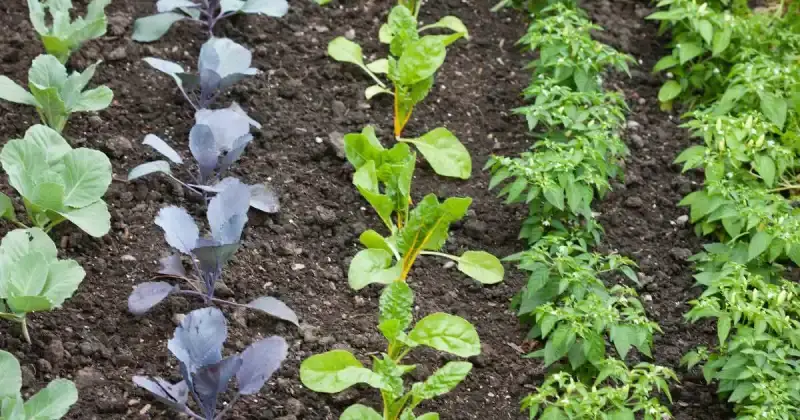
Whether indoors or out, cultural control capitalizes on understanding pests’ life cycles, habits, and preferences to disrupt optimal living conditions. Gardeners and farmers can effectively reduce pest infestations by implementing crop rotation, selecting pest-resistant plant varieties, and timely planting or harvesting. Even simple household spices, like cinnamon, can help deter pesky gnats from indoor plants.
Such proactive measures minimize the opportunity for pests to thrive and enhance overall plant health and resilience, making them less susceptible to pest attacks and diseases in the first place.
By adjusting when, where, and how we plant, we can inhibit pests and keep our plants healthy without synthetic pesticides. 5
Practicing Good Garden Hygiene
Practicing good garden hygiene is essential for flourishing garden plants. Regularly clearing out plant debris and weeds helps reduce hiding spots for pests – even indoors, when it comes to those pesky fruit flies. Before introducing new plants into your garden, keep them separate for a few days to check for signs of diseases or problem pests.
It’s also essential to clean and disinfect gardening tools, especially after using them on diseased plants, to prevent the spread of pathogens from one area of your garden to another. It’s vital to inspect your plants to keep issues in check.
Remember, maintaining a clean green space is the first and most natural proactive step in minimizing pest problems. Because growers face the unrelenting onslaught of the notorious spider mite because of poor garden hygiene, I wrote a detailed article on how to get rid of spider mites on your veggies.

Proper Soil Health And Nutrition To Boost Plant Immunity
This method involves incorporating organic matter, such as compost, into the soil, which provides nutrients and promotes microbial activity. A healthy soil microbiome supports robust root systems and enhances plants’ ability to resist pests and disease. Proper irrigation and drainage also ensure optimal moisture levels, contributing to plant health.
Crop Rotation For Soil Replenishment
Crop rotation is a natural and organic method to help gardens thrive. It involves rotating your crops throughout your garden so they aren’t planted in the same spot year after year. This simple habit helps break up pest cycles and reduces disease risks like root rot, Fusarium wilt, and Verticillium Wilt. It also replenishes the soil with nutrients and improves overall soil health.
For example, a farmer might plant corn in a particular field for one year, followed by soybeans in the same area the following year. Although the corn depletes the soil of nitrogen in the first year, the soybeans will fix nitrogen in the ground in the second. This systematic rotation helps to keep the soil healthy and productive while sustaining your crops and rewarding you with bigger yields. 6
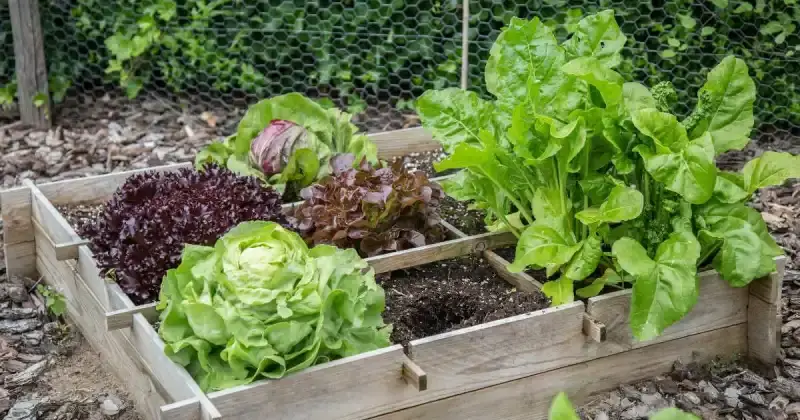
Companion Planting For Thriving Garden
Companion planting is a natural method to keep plants healthy and free of pests like Japanese beetles and carrot flies and diseases like powdery mildew and potato blight. This practice involves planting certain plants together to create a mutually beneficial relationship.
For example, planting sweet peas with thyme can help deter slugs and snails, while planting parsley near tomatoes can help attract hoverflies, which primarily feed off harmful pests like aphids and spider mites.
Additionally, planting marigolds, mint, rosemary, lavender, and other strategic varieties can help deter hungry invaders from entering your garden. Grasshoppers, particularly, don’t care for the pungent aroma of these plants. It’s best to plant these around the perimeter of your space or throughout your garden near vulnerable crops.
Indeed, incorporating these practical methods into your gardening routine helps keep your garden flourishing and lessens the chances pests and diseases can take hold of your vegetation.
Although growing a garden may be relatively straightforward by following the appropriate steps, keeping your plants healthy with big yields poses more of a challenge regarding unpredictable pests. The video below explains some popular natural options for fighting back and reclaiming what’s rightfully yours!
Trap Crops Are Sacrificial Crops
Trap crops are plants grown to attract pests, drawing them away from your primary crop. By planting these sacrificial crops, gardeners can keep unwanted bugs occupied and away from the central garden.
For example, using simple plants like marigolds as a repellent for harmful pests like aphids, beetles, and nematodes is wise. Millet acts as a trap crop for stem borers, which can damage sorghum, while clover provides cover for pests like lygus bugs, which attack strawberries or cotton. This uncomplicated method is efficient, natural, and doesn’t rely on chemicals that any backyard grower can use successfully. 7
Intercropping To Maximize Space And Control Pests
Intercropping involves planting two or more crops together to maximize the use of space while improving bug control. Diversifying the plants and soil environment ensures pest control doesn’t rely solely on synthetic chemicals.
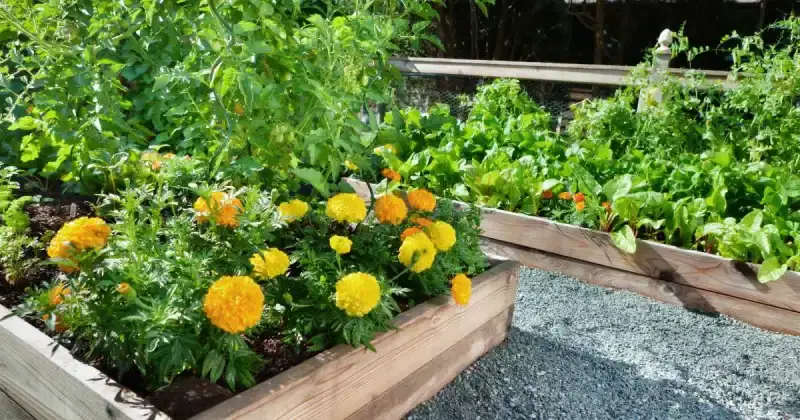
For instance, planting radishes among cucumbers can help deter cucumber beetles. Growing basil with tomatoes is an intercropping technique believed to repel pests like aphids and enhance the tomatoes’ flavor.
The combination of corn and beans is common in many parts of the world, including Central America and Africa. The corn supports the climbing beans, while the beans fix nitrogen into the soil, improving fertility for both crops. Intercropping is a valuable, eco-friendly, and efficient strategy for maintaining a balanced ecosystem.
Mechanical Control Method (Spray And Row Covers)
Mechanical control methods use physical means to kill or remove pests. These methods include handpicking pests, using organic sprays and soaps, and setting up physical barriers and traps. Let’s take a look at each to get a better understanding.
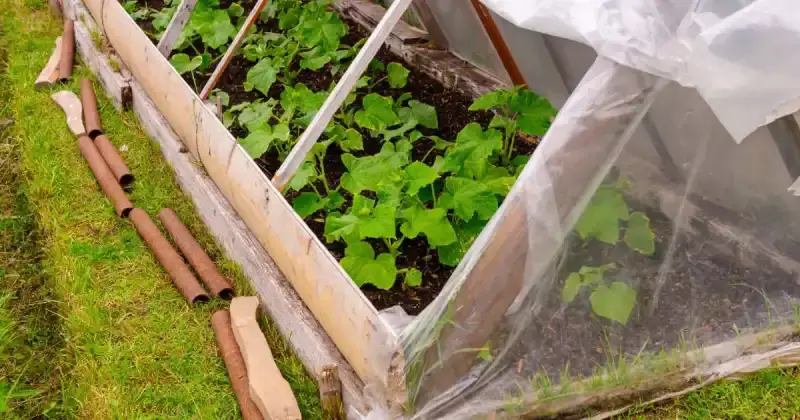
Handpicking Pests
This strategy is a straightforward procedure every gardener uses. It involves physically removing bugs in your garden by hand. Although time-consuming and labor-intensive, this direct approach ensures you target specific pests without affecting nearby eco-friendly bugs. After handpicking pests, it’s essential to dispose of them appropriately to prevent their return or reproduction.
A popular method of bug disposal is placing them in a container filled with soapy water, which ultimately kills them. Once they’re dead, you can throw them away in a sealed bag in the trash.
Fortunately, you can compost dead insects that have caused harm to the garden. When added to an organic pile, these insects will break down and become part of the nutrient-rich mix. Additionally, they can provide a source of protein for beneficial microorganisms.
However, it’s crucial to ensure that the organic pile reaches a sufficient temperature to kill off any potential pathogens or eggs that might be present on the dead pests. Also, don’t pour the soapy water into your pile. Bugs only, please!
Using Organic Sprays And Soaps
Organic sprays and soaps are a natural pesticide choice for many gardeners. This approach targets pests while ensuring plants remain chemical-free. Examples of this are the following:
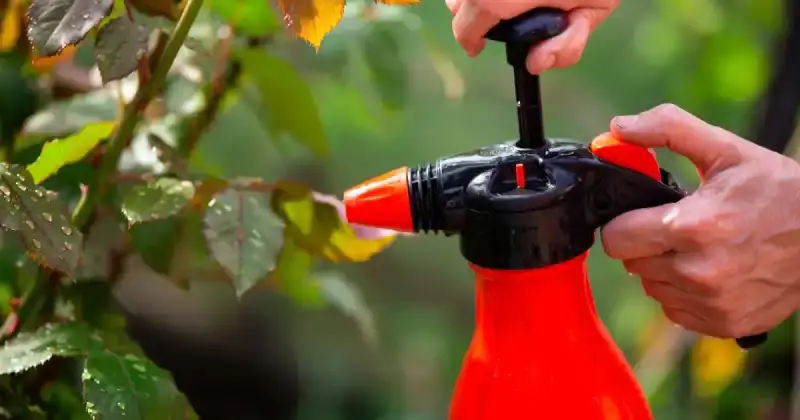
Neem Oil Spray
Derived from the seeds of the Neem tree, Neem oil disrupts pests’ life cycle, making it harder for them to grow and reproduce. It’s effective against aphids, mites, whiteflies, caterpillars, and several fungal diseases like powdery mildew. Let’s review the step-by-step process of making a homemade Neem oil spray.
- Start with lukewarm water as it helps in mixing the Neem oil better.
- Add the Neem oil to the water. Always shake or stir the oil container before use because the contents might have settled. This process will dilute the Neem oil properly.
- Add the liquid or insecticidal dish soap, which helps break down the oil and spread it uniformly in the mixture.
- Stir or shake the mixture thoroughly to ensure the oil is well distributed.
- Pour the solution into a spray bottle.
- Spray the affected plants thoroughly, ensuring you cover the tops and undersides of the leaves.
It’s best to apply Neem oil in the early morning or dusk to prevent potential plant burn from the sun. Ensure to shake the bottle regularly during application to keep the solution properly mixed.
Vinegar is another natural and non-toxic solution for your garden, especially when combating hungry grasshoppers looking to descend upon your crops. It is safe to use around children, pets, and beneficial insects.
Vinegar is also readily available and inexpensive, providing a cost-effective pest control method for gardeners. It’s a small step towards embracing more eco-friendly practices that can make a big difference.
Garlic Spray
Garlic spray is a common choice for backyard growers in controlling bugs due to its legendary repellent properties. Due to garlic’s pungent smell and natural sulfur compounds, it deters pests like aphids, whiteflies, and spider mites. Here’s how you can make your homemade garlic infusion:
- Peel and finely chop or crush the garlic cloves. The more garlic you use, the stronger and potentially more effective the solution.
- Place the chopped or crushed garlic in a bowl and cover it with water. Let it soak for 24 hours.
- After soaking, strain the garlic pieces from the water, retaining the garlic-infused water.
- Add the liquid dishwashing soap and Neem or vegetable oil (if using) to the garlic-infused water. Stir or shake to mix well.
- Pour the solution into a spray bottle.
- Spray plants thoroughly, covering both the tops and undersides of leaves.
It’s best to test the spray on a small portion of a plant first, then wait 24-48 hours to ensure no adverse reaction occurs. Store any extra garlic concoction in the refrigerator for up to a week. After that, its effectiveness may begin to diminish. Apply every week and after rainfall for the best results.

Physical Barriers And Traps
Physical barriers and traps offer a non-toxic pest control solution. By setting up obstacles or traps around your garden, you help control unwanted pests. These methods keep insects away and help your plants thrive without artificial chemicals. It’s a straightforward and effective way to safeguard your garden. 8
Here’s a list of the most common barriers and traps you may apply in your garden.
- Floating Row Covers: These lightweight fabric covers allow sunlight and rain to reach plants but prevent insects such as aphids and cabbage moths from landing and laying eggs.
- Sticky Traps: These are often bright yellow or other colors and coated with a sticky substance. They attract and capture flying pests like whiteflies and fungus gnats.
- Plant Collars: These rings are placed around the base of plants to protect them from pests such as cutworms and slugs. They are made of cardboard, metal, or plastic and are available in various sizes to fit different plants.
- Bird Netting: Placed over fruit bushes or trees to protect them from birds that might eat the fruits.
- Insect Mesh or Netting: Fine mesh nets that can prevent smaller insects, such as carrot flies, from reaching the plants.
- Copper Tape: Copper tape is a sticky tape made of copper and can be applied around the perimeter of gardens and flower beds. It gives slugs and snails a small electric shock, deterring them from crossing.
- Barriers: You can use physical barriers such as fences or walls to keep animals like deer and rabbits away from your garden.
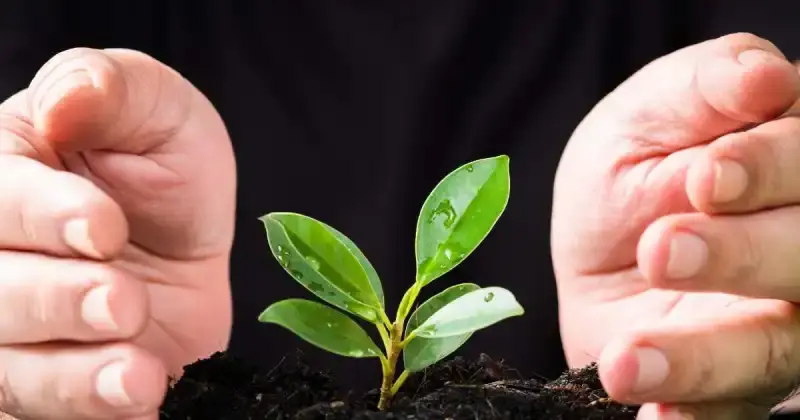
Tips For Non-Toxic Pest Solutions: Pesticide Free Garden
Regular Monitoring And Early Pest Detection
Regular monitoring and early intervention are also essential to prevent pest outbreaks. Look for changes in leaf color, wilting, and unusual growth patterns. By inspecting your plants regularly, you can quickly identify and address any issues before they become significant problems requiring harmful pesticides.
Dispose of host plants that show signs of infection or infestation and isolate new ones to prevent potential pest spread in the garden.
Proper Plant Care And Maintenance
Keeping your plants healthy through proper watering, fertilization, and pruning can help prevent pest infestations. Healthy plants with robust immune systems can better withstand attacks from pests and diseases, which is possible by keeping the growing area clean and free of debris that can harbor these insects. 9

Use physical barriers like garden beds, netting, or row covers to protect your plants from pests. Implementing cultural practices, such as crop rotation or companion planting, while using biological controls, such as predatory insects or nematodes, helps manage pest populations.
Most importantly, educating oneself about common pests in the garden and their prevention and control methods is crucial since these hungry critters will inevitably descend upon your garden. 10
For example, one excellent way to protect your garden plants with a popular and inexpensive household item is baking flour.
Flour can rid your garden of pests, such as grasshoppers, by creating a physical barrier that deters them from feeding on your plants. When flour is sprinkled on plants, it forms a powdery layer that pests find unpleasant to walk on or eat.
Additionally, flour can suffocate pests by clogging their breathing pores (spiracles) when they come into contact with it, leading to their eventual demise.
The drying effect of flour can also contribute to pest control by absorbing moisture from pests’ bodies, causing them to dehydrate and die.
Furthermore, flour can disrupt pests’ feeding behavior by swelling their digestive systems, making them feel full, and reducing their appetite.
Seeking Professional Help When Necessary
Sometimes, despite a gardener’s best efforts, pests can become overwhelming. In such cases, seeking expert assistance ensures the problem is addressed effectively, safeguarding the future health of the garden.
If you suspect a severe infestation, seek the advice of a professional horticulturist or entomologist in your local area who can recommend appropriate treatments. They may also be able to identify the specific pest and suggest ways to prevent future outbreaks. Local garden clubs, like cooperative extensions granted by the United States Department of Agriculture, are a great place to start.
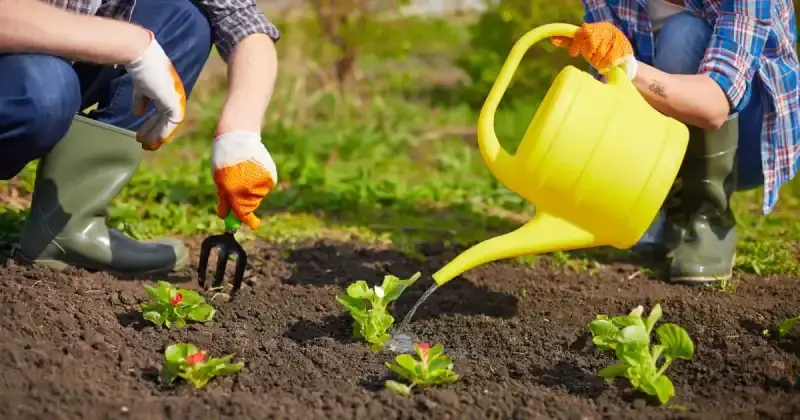
Conclusion
Embracing nature-based pest mitigation techniques is a nod to potent organic solutions and a step towards sustainable gardening. In this article, we’ve dug deep into understanding common garden threats and how to mitigate them. From beneficial bugs to non-toxic barriers, sprays, companion planting, and crop rotation, it’s evident that plenty of diverse strategies exist to maintain a flourishing garden.
Opting for chemical-free pest control in organic gardening protects our health and the environment and promotes a balanced garden ecosystem. By emphasizing natural methods like companion planting, composting, and using natural predators, gardeners can effectively deter pests, reduce pollution, and maintain garden biodiversity. Regular garden monitoring, proper plant care, and being informed about pest management can ensure a thriving garden, though professional guidance might be required for severe infestations.
Instead of leaning on chemicals, adapting our gardening routines can yield remarkable results. As we adjust planting practices and employ organic barriers, we’re not just managing pests but fostering a balanced ecosystem. It’s a clear reminder that sometimes, the best solutions are the ones nature provides. Letting nature do its work is often the most effective and harmonious approach.
How do you approach natural pest maintenance in your backyard garden? Share a tip or two that has brought you success in the comment section below!
SOURCES
- National Library Of Medicine, National Center For Biotechnology Information – Plant-Derived Pesticides As An Alternative To Pest Management And Sustainable Agricultural Production: Prospects, Applications And Challenges
- National Library Of Medicine, National Center For Biotechnology Information – Investigating the (Mis)Match Between Natural Pest Control Knowledge And The Intensity Of Pesticide Use
- The National Gardening Association – Pest Control Library
- The National Gardening Association – Beneficial Insects
- United States Department Of Agriculture – Tipsheet: Organic Pest Management
- United States Department Of Agriculture, Economic Research Service – Soil Tillage And Crop Rotation
- University of Georgia, Extension – Trap Cropping For Small-Market Vegetable Growers
- Wikipedia – Row Cover
- Oklahoma State University, Extension – Basic Plant Care: Understanding Your Plant’s Needs
- Oklahoma State University, Extension – Home Vegetable Garden Insect Pest Control

